Bats are among Jersey’s most fascinating yet overlooked inhabitants. Though small and primarily nocturnal, these flying mammals play critical roles in the ecological well-being of the island: controlling insect populations (like midgies or mosquitos) and serving as bio-indicators of environmental change. From feeding on vast quantities of agricultural pests to serving as early harbingers of declining insect numbers, bats are natural allies in maintaining ecological balance – yet their cryptic habits mean that much of their existence remains hidden from sight.
Jersey’s geographical position in the Channel endows it with a uniquely diverse bat community – 18 species have been recorded, including those more typical of continental Europe. Among them, species such as Kuhl’s pipistrelle (Pipistrellus kuhlii) and the regionally significant grey long-eared bat (Plecotus austriacus) are more commonly encountered than across much of Britain. Additionally, rarer species like the lesser horseshoe bat (Rhinolophus hipposideros) and several migratory pipistrelles further enrich the island’s bat diversity.
We wanted to highlight some of the local research work taking place in Jersey that is contributing to furthering our knowledge of the local bat populations and their statuses.
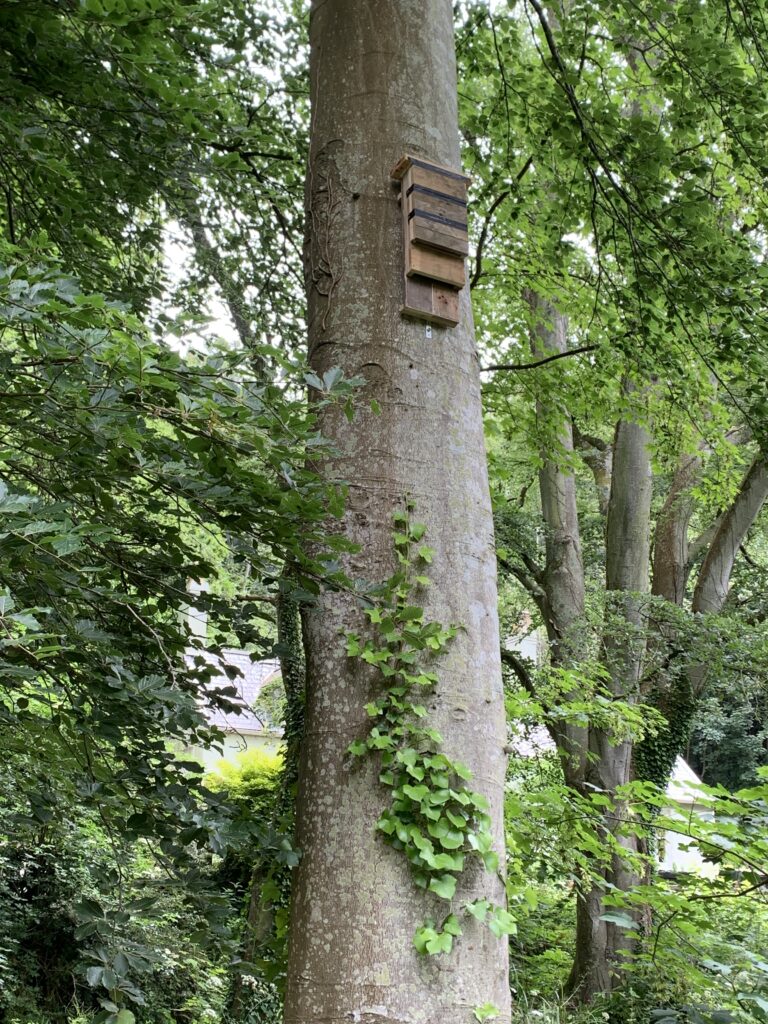
While Jersey has many pockets of woodland, most are relatively young and lack the hollow veteran trees that bats often depend on for roosting—though not exclusively. Recognising this limitation, the Woodland Bat Project was launched in 2014 by the Jersey Bat Group in partnership with the Collett Trust for Endangered Species. The aim was simple but ambitious: to test whether artificial roost provision could bridge the gap and encourage bats to colonise Jersey’s developing forests.
More than fifty bat boxes were installed across the island at sites such as St Peter’s Valley, Val de la Mare, St Catherine’s Woods, Hamptonne, and Samares Botanical Gardens. The boxes were set at different heights and orientations to suit the needs of various bat species, mimicking the natural diversity of roosting spaces that would otherwise only be found in old trees. Each year, volunteers and ecologists return to these sites, using endoscopes and torch inspections to search for signs of occupation—whether the bats themselves, accumulations of droppings, or scratch marks inside the boxes. At the same time, habitat surveys are carried out to record woodland structure, canopy development, and the character of surrounding edges, providing valuable context for the monitoring results.
The findings have been encouraging. Natterer’s bat (Myotis nattereri) has been confirmed breeding in Jersey woodlands for the first time, a significant discovery given how scarce evidence of local reproduction previously was. Brown long-eared bats (Plecotus auritus) and pipistrelles have also been recorded using the boxes, suggesting that even relatively young woodland can support multiple species if roosts are available. While occupancy rates remain modest, they are consistent from year to year, reflecting both the time it takes bats to discover and adopt new sites and the gradual process of woodland colonisation. Over time, the network of boxes appears to be encouraging the development of stable roosting networks across the island.
Jersey’s woodlands are a dynamic, recovering habitat. Most were historically cleared for farming or fuel, particularly during the Occupation of the Second World War, and many current stands are secondary growth or plantations. As a result, natural tree cavities are far scarcer here than in mainland forests. The bat boxes therefore act as stepping-stone habitats, supporting local colonies until the trees mature enough to form hollows of their own. Just as importantly, the project has generated a long-term dataset that allows ecologists to track whether bats are truly establishing themselves in young forests. Beyond the science, it has also become a valuable educational tool: guided walks and talks linked to the project sites have given members of the public the chance to engage with woodland biodiversity in a very tangible way.
Like all conservation work, the project faces its challenges. Occupancy rates are lower than in some mainland schemes, which may reflect the more limited foraging opportunities available in Jersey’s youthful woodlands—or possibly broader shifts in bat populations that need further study. The boxes themselves also weather over time and occasionally need repairing or replacing, making active maintenance an essential part of the effort. Ensuring continuity is key: only with consistent long-term monitoring will the full picture emerge.
The Woodland Bat Project shows that conservation action does not always need to be grand or high-tech. Sometimes, simply providing safe homes can make a real difference. By supplementing the habitats that Jersey already has, the project offers bats a foothold in landscapes where they might otherwise struggle, and in doing so, it helps secure a future for bats in the island’s woodlands.
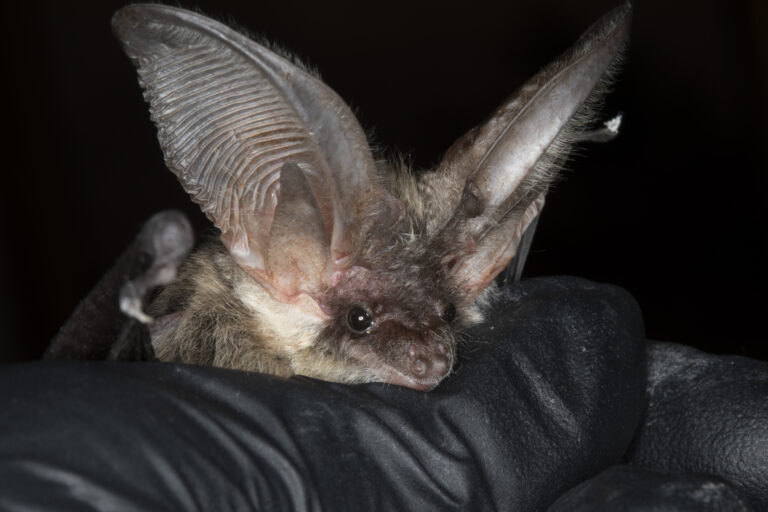
Jersey hosts one of the Channel Islands’ most important populations of the grey long-eared bat (Plecotus austriacus), a species recognised globally as Near Threatened on the IUCN Red List. While widespread in southern Europe, it is scarce and highly localised further north, with only a handful of known colonies in the British Isles. Jersey therefore represents a critical outpost for this species, making local monitoring and conservation work particularly significant.
The Jersey Grey Long-eared Bat Project, led by researchers from Sangan Island Conservation, has become a cornerstone of this effort. Its work centres on long-term monitoring of maternity roosts, documenting seasonal trends, and building a clearer picture of how grey long-eared bats use Jersey’s landscape. Unlike many other bats, this species shows a strong reliance on traditional buildings such as churches, barns, attics, and roof voids, which provide the large open spaces they prefer for day roosting. Alongside roost monitoring, surveys have also investigated surrounding foraging habitats, with grasslands, meadows, and orchard edges emerging as especially important.
In 2022, this research took a sobering turn when the island experienced an intense summer heatwave. During routine checks, conservationists discovered a major mortality event in one of Jersey’s largest maternity roosts: 42 bats were found dead, including 33 juveniles close to fledging. Follow-up inspections revealed further casualties, bringing the total to at least 65 individuals, with an estimated 55 lost in that season alone. Such high losses in a single year are unprecedented for this species locally and raise serious concerns about the vulnerability of bat colonies to climate extremes.
Although heartbreaking, the event has also yielded valuable scientific opportunities. The remains were carefully collected and transferred to the National Museum of Scotland, where they are now being used in genetic studies to examine relatedness between individuals and to compare Jersey’s grey long-eared bats with mainland European populations. Some specimens have also been retained for museum display, helping to bring public attention to the impacts of heat stress and climate change on bat populations.
In recognition of the urgency of this work, the project received a £20,000 grant from the Jersey Community Foundation, funded through the Channel Islands Lottery. This support has enabled investment in equipment, training, and deeper ecological research. These resources are now being used to strengthen roost monitoring and to investigate questions such as how bats choose roost sites, whether some structures provide better thermal stability than others, and how climate resilience can be built into conservation planning.
The grey long-eared project is still in its early stages, and many results are yet to be published. Nevertheless, it has already highlighted both the importance of Jersey as a stronghold and the fragility of these populations in the face of environmental change. In the years ahead, the project aims to refine our understanding of roost ecology, assess population size more accurately, and provide practical recommendations for protecting roosts in buildings at a time when renovation and climate extremes pose increasing threats.
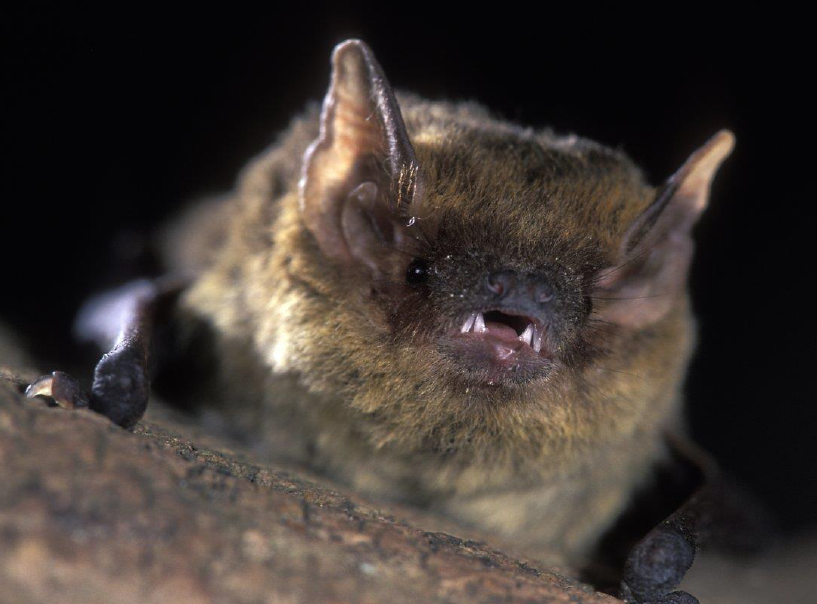
When structured bat monitoring first began in Jersey in the early 2010s, it was the pipistrelles that told the clearest story. Small, adaptable, and often the first bats noticed by islanders at dusk, they quickly became the flagship species for assessing how Jersey’s bat fauna was changing. Two major research efforts—the decade-long iBats Jersey programme and the more recent MSc studies by Tahnee Blakemore (2022)—have provided contrasting but complementary perspectives on these everyday bats. Together, they illustrate how our understanding of pipistrelles has developed, and why methodology matters as much as results in bat science.
The iBats (Indicator Bats Programme) was designed as a global citizen science project, using standardised car transects to monitor bat activity. Jersey joined in 2011, with eleven fixed routes driven twice each summer at a steady 15 mph. Early years used time-expansion detectors, later upgraded to full-spectrum recorders, with GPS to map calls. These recordings were then classified to species level, with varying degrees of manual checking.
The results, summarised in the 2022 10-year analysis, confirmed that common pipistrelle (Pipistrellus pipistrellus) was by far the most frequently detected bat on the island. Calls of soprano pipistrelle (P. pygmaeus) and Kuhl’s pipistrelle (P. kuhlii) were also frequent, while Nathusius’s pipistrelle (P. nathusii) appeared only rarely. Importantly, the data suggested a 70% increase in common pipistrelle activity over the survey period—a trend that outpaced increases seen in Britain and France.
Yet, despite these valuable findings, iBats had clear weaknesses. Car-based transects are biased toward roads and open habitats, meaning species associated with cluttered woodlands (such as long-eareds, horseshoes, and Myotis bats) were under-recorded or missed entirely. Early detectors also struggled to capture higher-frequency calls, and classifiers often misidentified species, especially when distinguishing Kuhl’s from Nathusius’s pipistrelles. The programme provided breadth but not depth, offering an outline of Jersey’s bat community without always capturing its nuances.
Nevertheless, iBats was important. It was the first structured, long-term monitoring effort in Jersey, run largely by volunteers, and it gave the island a valuable baseline. It proved that large-scale citizen science could work locally, even if refinement was needed. Most importantly, it created a foundation on which later, more targeted research could build.
That refinement came a decade later through the work of Tahnee Blakemore, whose MSc project at The University of Exeter (2022) focused squarely on Jersey’s pipistrelles. Her research had two goals: to resolve the identification challenges between Kuhl’s and Nathusius’s pipistrelles, and to critically evaluate the acoustic monitoring methods being used in Jersey.
Blakemore deployed static detectors across diverse habitats, feeding recordings through the BTO’s Acoustic Pipeline before manually validating results. Her first report, tellingly titled “Call me maybe?”, analysed thousands of calls and confirmed what had long been suspected: Kuhl’s pipistrelle is genuinely widespread and resident in Jersey, while Nathusius’s pipistrelle is rare and largely migratory. Out of nearly 3,700 validated calls, 3,230 were Kuhl’s and only 468 Nathusius’s. Subtle differences in call frequency and duration helped separate the two, but the high error rate of classifiers (around 12%) underscored the importance of local call libraries and expert checking.
Her second report, “A sound observation?”, turned the lens on methodology itself. By comparing iBats transect data with static monitoring, she showed that car-based surveys consistently underestimated clutter-adapted species and provided only a partial picture of Jersey’s bat community. Static detectors, while requiring more effort to deploy and analyse, captured a much richer diversity of species and behaviours, particularly when left out for extended periods. Her findings echoed conclusions from across Europe: if the goal is to understand bat assemblages in their entirety, static full-spectrum monitoring is the future.
Together, these projects chart the evolution of bat monitoring in Jersey. iBats gave the island its first decade-long baseline, proving that pipistrelles were thriving and providing evidence of population growth in common pipistrelles. But it also revealed the limits of car-based transects, especially for subtle questions about species identity or habitat use. Tahnee Blakemore’s work advanced the science by tackling those very questions head-on. She not only confirmed Kuhl’s as an established Jersey species and Nathusius’s as scarce, but also showed how methods shape the conclusions we can draw.
For conservation, the implications are clear. Pipistrelles may be abundant, but they are also sensitive indicators of environmental change. Monitoring their numbers and distributions helps track insect availability, habitat quality, and the influence of light pollution and climate change. The northward spread of Kuhl’s pipistrelle illustrates how Jersey sits on the frontline of range shifts driven by warming temperatures, while Nathusius’s rare appearances connect the island to European migratory flyways. By refining monitoring methods, researchers ensure that Jersey’s data is not only locally valuable but also contributes meaningfully to broader European bat science.
What began with volunteers driving quiet country lanes has now developed into cutting-edge acoustic studies with international relevance. In this story, pipistrelles are not just the most common bats of Jersey—they are also the best teachers, showing us how science evolves, how methods matter, and how even small islands can play a big role in understanding biodiversity change.

In 2024, Jersey researchers began investigating a question that had never been tested in the Channel Islands: do bats make use of the island’s offshore reefs? These sites, the Minquiers and the Écréhous, are internationally recognised Ramsar wetlands, better known for seabird colonies and seal haul-outs than for flying mammals. Yet their position between Jersey and the French coast made them strong candidates for bat activity, either as navigational landmarks, stop-over points, or feeding areas.
The study was a collaboration between Dr Amy Louise Hall (Chair of the Société Jersiaise Zoology Section), Hannah Le Morvan (Research Officer, Jersey Bat Group), Kevin McIlwee (Chair, Jersey Marine Conservation), and Gregory Guida (Jersey Marine Conservation and Jersey Bat Group). Together, the team designed and deployed the first systematic acoustic monitoring programme for bats on Jersey’s reefs.
The approach was straightforward but technically challenging. Static full-spectrum bat detectors were installed on La Maîtresse Île in the Minquiers (September 2024) and on the Écréhous (October 2024). Each unit recorded automatically from 30 minutes before sunset to 30 minutes after sunrise, every night it was in place. Deployments had to be carefully planned around tides and weather, and the equipment was exposed to salt spray and strong winds.
Recorded files were processed through the BTO Acoustic Pipeline, with calls filtered at a 70% confidence threshold and then manually verified using Anabat Insight software. This ensured species identifications were as robust as possible.
Even in this first season, the detectors confirmed bat activity at both reef systems.
Minquiers (Sept–Oct 2024): over 73,000 files logged, with 2,341 confirmed bat calls.
Écréhous (Oct–Nov 2024): over 71,000 files logged, with 654 confirmed bat calls.
Species identified at both sites:
Pipistrellus pipistrellus (common pipistrelle)
P. nathusii (Nathusius’s pipistrelle)
Eptesicus serotinus (serotine)
Nyctalus leisleri (Leisler’s bat)
The species composition was consistent with Jersey’s broader bat community but provided new evidence that these bats are active offshore, sometimes many kilometres from the coast. Of particular note were Nathusius’s pipistrelle, a long-distance migrant, and Leisler’s bat, a fast-flying open-air forager. Their presence suggests that Jersey’s reefs are part of wider ecological pathways linking the island to continental Europe.
This is the first systematic documentation of bat activity on offshore reefs in the Channel Islands. While occasional bat movements over water have been recorded elsewhere in Europe, Jersey’s monitoring provides rare empirical data from exposed marine environments.
The findings highlight several important points:
Offshore reefs are not ecologically isolated—they can form part of the habitat networks bats use.
Migratory species such as Nathusius’s pipistrelle may rely on such sites during seasonal movements.
Jersey’s geographic position makes it an important monitoring point for understanding how bats interact with marine landscapes.
The Offshore Reefs and Bats Project demonstrates that bats in Jersey are not limited to terrestrial habitats. By establishing baselines for offshore activity, it opens new research questions: how frequently do bats commute across open sea? Are reefs used regularly or opportunistically? What factors—tides, weather, insect abundance—shape this behaviour?
Answering these questions will be vital not only for bat conservation in the Channel Islands, but also for informing wider discussions on marine spatial planning, particularly as offshore developments such as wind farms expand across Europe.
Far from being peripheral, Jersey’s reefs are proving to be valuable pieces of the ecological puzzle. Through this project, they are beginning to reveal the hidden connections between land, sea, and the bats that move between them.
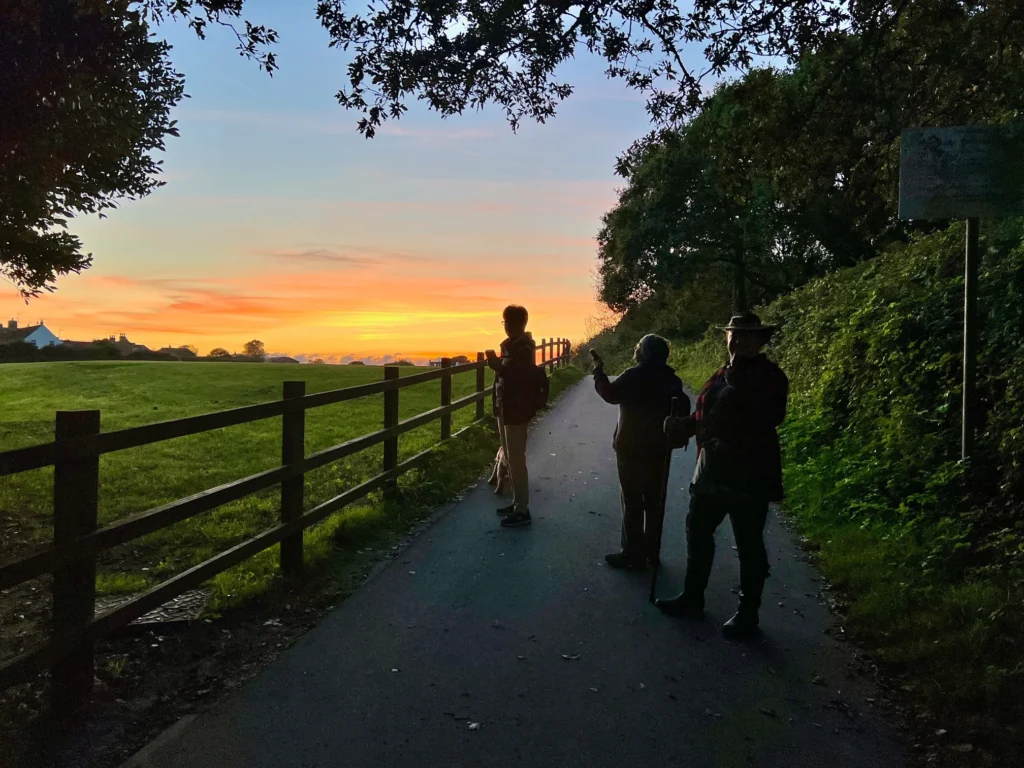
Long before structured surveys began, bats were a familiar—if poorly understood—presence in Jersey’s evenings. The island’s earliest references to them live in the margins of naturalists’ notebooks and the pages of local society bulletins: brief notes about “flittermice” dipping along hedgerows, or “bats in the church roof” that startled the parish during summer refurbishments. These fragments tell us something simple but important: bats were always here. What they don’t tell us is which bats, in what numbers, or how their fortunes changed through the twentieth century.
That lack of detail isn’t surprising. Until the 1990s, most British and European bat work was still built on direct observation—peering into roof voids, counting dusk emergences by torchlight, or, less commonly on small islands, using hand nets and harp traps near known flyways. Species identification in the field was hard. Small, brown bats look alike in low light, and before digital detectors became affordable and reliable, their voices were largely inaudible to us. Even when roosts were found—in barns, attics, pillboxes, or old farm outbuildings—records often stopped at “bat present,” with little confidence to push further.
Jersey’s landscape and history added their own quirks. Wartime fortifications and agricultural outbuildings unintentionally created roost opportunities, but many were disturbed, repurposed, or sealed as the post-war economy modernised. Woodland cover, historically fragmented and relatively young, offered fewer natural tree cavities than mature continental forests, which meant building-roosts were probably doing more of the ecological heavy lifting than anyone realised at the time. Naturalists knew bats used these spaces; few had the tools to say which species, or how populations were trending.
By the late twentieth century the conservation context was shifting. Across Europe, new legal frameworks and agreements placed bats firmly on the agenda, and detector-based acoustics began to move from specialist circles into wider use. Jersey benefited indirectly from that tide—but on-island, most effort still looked like careful local natural history: church loft checks with a torch; conversations with farmers about “the little bats above the tie beams”; a notebook entry when a maternity roost was suspected after a particularly busy summer dusk. It was patient work, carried by curiosity and care, and it kept dots on the map. What it couldn’t yet do was join those dots into a reliable picture.
Even at this early stage, a few themes were probably true—though they lived more as hunches than datasets. Common pipistrelles were likely abundant and widespread; their tolerance of human landscapes makes them the usual suspect whenever someone reports “lots of small bats round the garden lights.” Long-eared bats—brown and, crucially for Jersey, grey long-eared—were occasionally noticed in roof spaces, but unless someone was confident with in-hand identification, the records rarely went beyond “Plecotus sp.” Water-associated species almost certainly coursed along streams and reservoirs on still evenings, but without detectors those tell-tale, water-skimming “passes” were easy to miss. And the island’s proximity to France meant a Mediterranean flavour to the fauna was always possible; confirming it would have to wait for better tools and dedicated time.
If this sounds like a story of gaps, it is—but it’s also the foundation the modern era stands on. Those pre-2006 observations preserved knowledge of where bats persisted through decades of change, and they kept alive a culture of looking: checking the loft before replacing a roof; pausing at a church porch at dusk; noticing flight lines along hedges and streams. They also revealed where knowledge was thinnest—woodlands with little cavity resource; coastal and offshore zones that no one yet thought to survey; building-roosts vulnerable to well-meaning renovations.
That’s why the formation of the Jersey Bat Group in 2006 marked such a turning point. The questions hadn’t changed—Which bats? How many? Where?—but the toolkit had. Affordable full-spectrum detectors could finally make bat voices visible on a screen. Emergence counts could be repeated and standardised. Box schemes could compensate for a lack of old trees and, at the same time, create a monitoring scaffold. And later, island-wide protocols and academic partnerships would begin to test long-held assumptions against data.
Seen in that light, the pre-2006 period matters a great deal. It reminds us that conservation is cumulative: careful notes in the margins become baselines; a farmer’s memory of “bats every summer since Grandad’s day” becomes a thread to follow; a handful of attic roosts, informally watched for years, become the starting points for rigorous monitoring. It also explains the shape of Jersey’s modern bat work. The emphasis on building-roosts, the focus on young woodlands, the push for better acoustic methods—these choices answer questions the island has been asking, in one form or another, for over a century.
In short, before 2006 we had presence, but not pattern. What followed—community organising, new methods, and long-term projects—turned that presence into a story we could finally read.
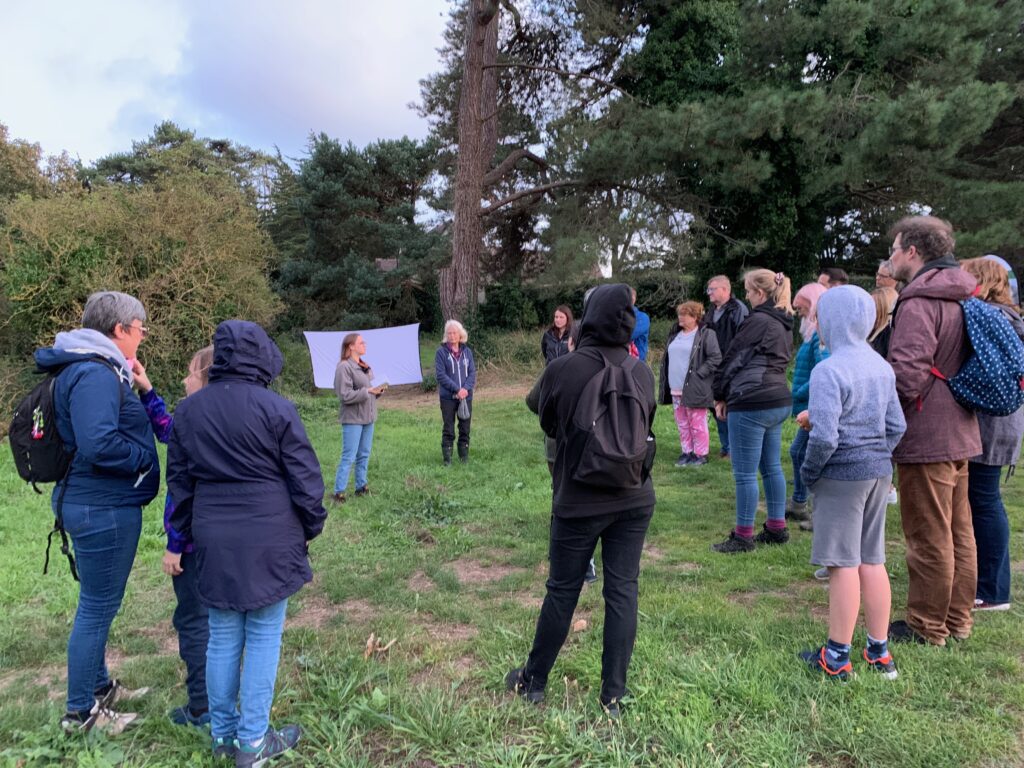
Taken together, these projects show just how far bat research in Jersey has come in a relatively short time. From scattered observations and anecdotal records, we now have dedicated monitoring schemes, targeted species studies, and even pioneering offshore surveys that push the boundaries of what we thought possible. Each project has filled gaps in our knowledge: the Woodland Bat Box Project revealing breeding Natterer’s bats in young forests; the Grey Long-eared Bat Project uncovering both resilience and vulnerability in one of our rarest species; the iBats transects and Tahnee Blakemore’s work building a baseline for pipistrelles; and the Offshore Reef Project expanding bat ecology into the seascape itself.
What unites them all is the recognition that Jersey’s bats are not only part of our island’s biodiversity, but also indicators of its health, resilience, and change. These studies have been driven by dedicated volunteers, local researchers, and collaborative organisations, proving that meaningful science can be achieved through community effort and persistence.
The story is far from finished. Jersey’s bats continue to face challenges — from habitat change and light pollution to the pressures of climate extremes — but we now have the tools and experience to understand and respond to them. The work so far is not the end of the story, but the foundation on which future discoveries will be built.

Working to protect and conserve Jersey’s native bat species through research, education, and community involvement.
Join our mailing list to receive updates about bat walks, training, and events.
2025 Jersey Bat Group. All rights reserved.